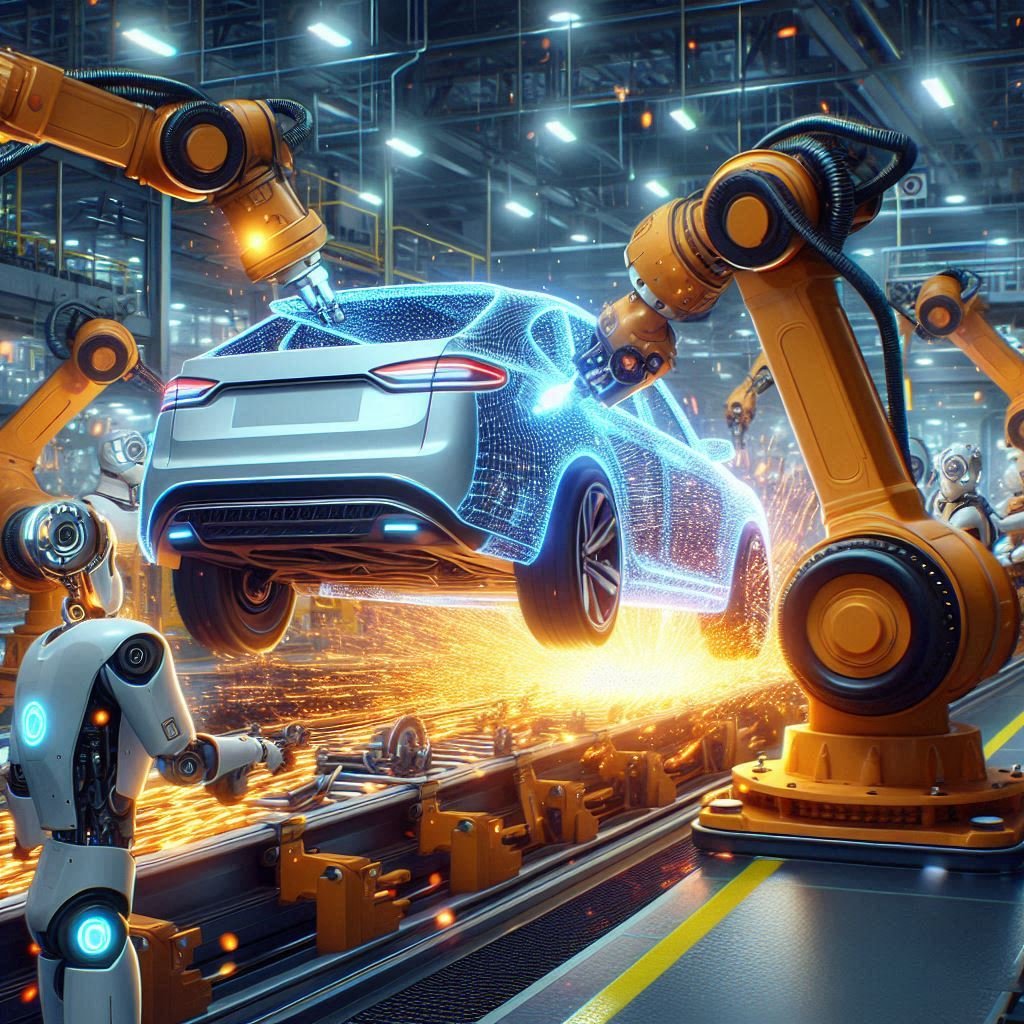Table of Contents
Overview: The Start of a New Era
Artificial intelligence (AI) is influencing our present and future and is no longer just far-off
dream. AI’s quick developments are changing how we live, work, and interact with the
outside world. Examples include self-driving cars and sophisticated illness diagnostics.
What promise these technological wonders offer for humanity, and what lies at their core?
This article examines the state of artificial intelligence today, highlighting its
developments, uses, and promising future.
The Technological Boom: Driving the
Development of AI
The Algorithms and Data’s Power :
A primary force behind the advancement of AI is the proliferation of data and the increasing
complexity of algorithms utilized to handle it. The previous five years have seen notable
advancements in AI’s capacity to handle challenging tasks. Artificial intelligence (AI) has
proven through self-play that it is capable of defeating human professionals in complex
games like Go, thanks to technologies like DeepMind’s AlphaZero. Commonplace uses of
AI include speech recognition, picture organization, and grammatical checks, which
demonstrate how AI is incorporated into our daily life.

Machine Learning’s Function:
Machine learning, a kind of AI that lets systems learn from data and get better over time, is
at the heart of AI’s capabilities. When presented with enormous volumes of data, machine
learning models may find patterns, forecast outcomes, and offer insights that were not
possible before. AI is a vital tool that promotes efficiency and innovation in a variety of
industries because of its capacity to learn and adapt.
Changing Sectors: AI in Action Revolutionizing Medical
AI has a significant impact on healthcare. Sophisticated algorithms help diagnose
illnesses, forecast patient outcomes, and customize care regimens. AI systems, for
example, are able to examine medical imaging to find early indicators of diseases like
cancer, which can lead to better patient outcomes and earlier intervention. AI-driven drug
discovery also speeds up the creation of novel therapies, providing hope for illnesses that
were previously thought to be incurable.

Improving Mobility:
Self-driving cars are one of the most obvious examples of AI’s potential in action. AI is used
by autonomous cars to negotiate intricate road networks, make choices in real time, and
improve passenger safety. This technology has the potential to completely transform the
transportation sector by lowering traffic accidents, clearing up congestion, and offering
mobility alternatives to people who are unable to drive.

Enabling Linguistic Translation:
Language barriers are disappearing thanks to AI-powered translation systems, which
improve accessibility and efficiency of communication. These tools use neural networks to
interpret and translate language with astounding accuracy, assisting linguists in the
interpretation of antiquated texts and promoting international cooperation. This
development is especially important in a globalized society where intercultural
communication is essential.
Financing Optimization:
AI is used in the financial industry to improve customer service, identify fraudulent activity,
and optimize trading tactics. In order to ensure successful and efficient transactions,
machine learning algorithms examine market trends, forecast price changes, and
automate trading procedures. AI systems also keep an eye on transactions to look for
unusual activity, protecting banks and their clients.
Simplifying the Manufacturing Process:
AI is revolutionizing the industrial industry by enhancing quality control and optimizing
production procedures. Artificial intelligence-powered predictive maintenance minimizes
downtime and prolongs the life of equipment, and automated quality checks guarantee
that goods fulfill strict requirements. By integrating AI, manufacturers may increase
productivity, cut costs, and better fulfill the demands of a competitive market.

Hardware Advances and Computational Power:
The Foundation of AI:
AI’s capabilities have been greatly enhanced by hardware developments, especially with
regard to Graphics Processing Units (GPUs) and Tensor Processing Units (TPUs). These
potent processors make it possible to train complicated AI models more quickly, enabling
researchers to push the limits of what AI is capable of. By offering scalable resources,
cloud computing increases this capacity even further and improves the efficiency and
accessibility of AI development.
Neural Networks and Deep Learning:
Modern AI is built around deep learning, which draws inspiration from the human brain.
Deep neural networks—layered neural networks—process enormous volumes of data in
order to learn hierarchical representations. AI is unique in that it can comprehend and
analyze complicated data, which opens up new applications for it including speech and
picture recognition, natural language processing, and autonomous systems.

AI Ecosystem: Cooperation and Innovation
International Study and Open Source:
The AI research community is a thriving innovation and collaboration ecosystem. Around
the world, organizations, engineers, and researchers collaborate, advance, and push the
limits of artificial intelligence. TensorFlow and Py Torch are two examples of open source
tools that democratize AI development by enabling anybody with an interest to participate
and create. Together, we can expedite progress and guarantee that the advantages of AI
are shared widely.
Investing and Starting Your Own Business:
The amount of money invested in artificial intelligence (AI) is at an all-time high, with big
companies aggressively sponsoring R&D and venture capital firms flooding AI startups with
cash. This cash inflow promotes innovation, advances the creation of cutting-edge
technologies, and expedites the release of AI-driven products. The AI community’s
entrepreneurial mentality creates a dynamic atmosphere that is conducive to the growth of
novel concepts and scientific discoveries.

Ethical Perspectives: Charting the Course for the Future
The Requirement of Conscious AI:
The importance of ethical considerations increases with the power of AI. Responsible
approach to AI development is required due to the potential for misuse, bias, and
unforeseen effects. To guarantee that AI technologies are created and implemented
ethically, with an emphasis on openness, justice, and accountability, public knowledge
and engagement are essential.
Filling the Void: The concept of Artificial Personality (AP)
The creation of artificial personalities (APs) is one fascinating area of AI research. The goal
of AP is to give AI systems human-like traits so that interactions become more natural and
interesting. This development could increase the appeal and usefulness of AI by bridging
the gap between impersonal chatbots and truly engaging interfaces. Through questioning
current frameworks and creating AP from the ground up, scientists are clearing the path for
more approachable and useful AI systems.

Final Thoughts: Welcome to the AI Revolution:
Our world is changing in ways never seen before thanks to the developments in AI
technologies. AI has a wide range of applications, from improving manufacturing and
healthcare to streamlining finance and transportation. We are at the cusp of an AI
revolution, so it is imperative that we adopt new technologies sensibly and make sure they
are beneficial to all people. We can create a future where AI and humans coexist
peacefully, opening up new opportunities and advancing progress for future generations,
by being knowledgeable, involved, and morally upright.
Conclusion:
The state of AI today is evidence of both technological advancement and
human inventiveness. The combination of expanded intelligence and artificial personality
holds great potential to improve our lives and change how we connect with one another. As
long as we keep researching and developing, artificial intelligence will have endless
possibilities that the following generation of trailblazers will have to uncover.


